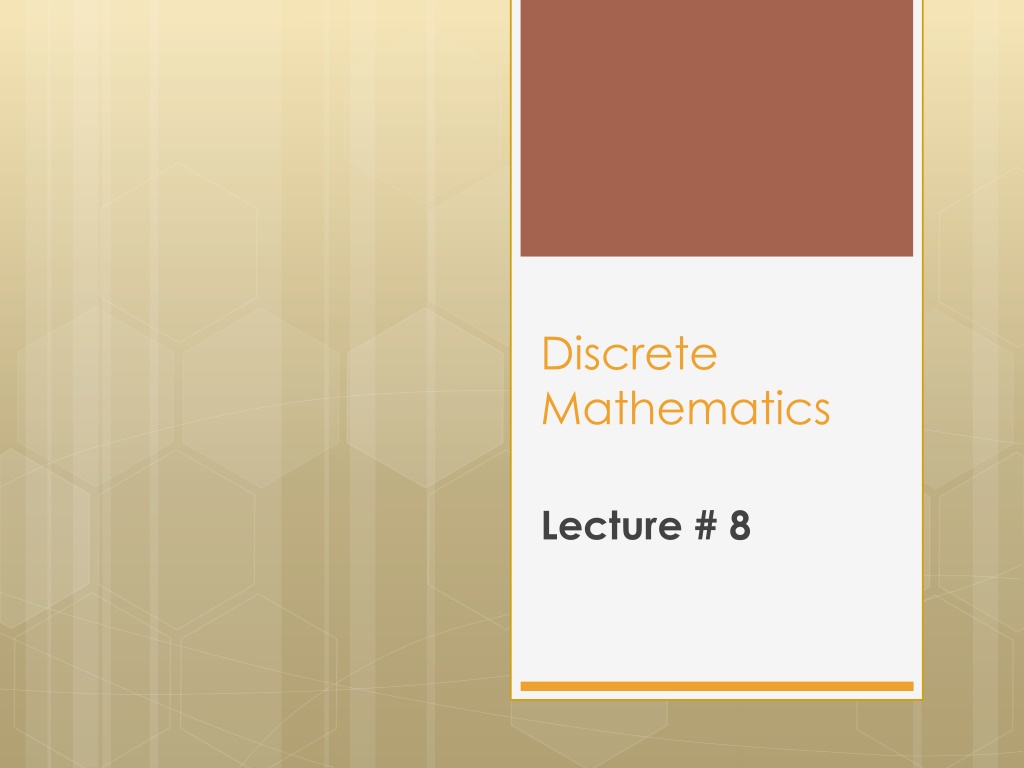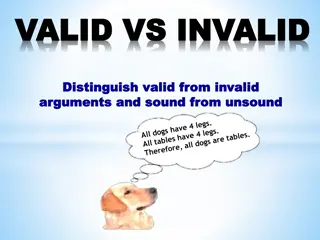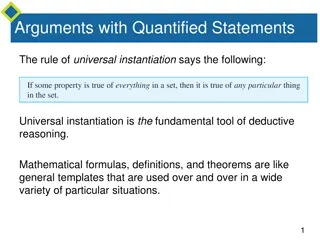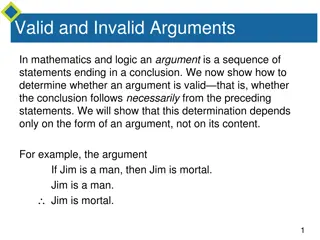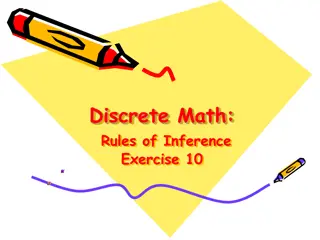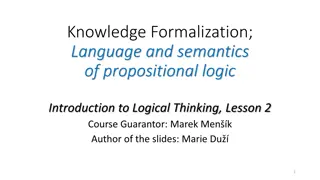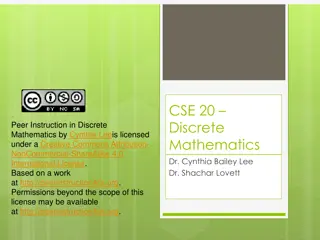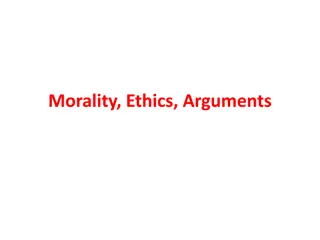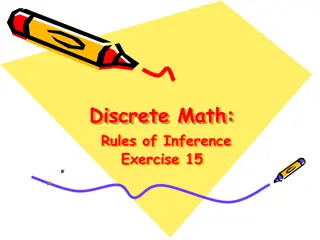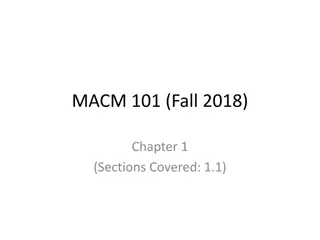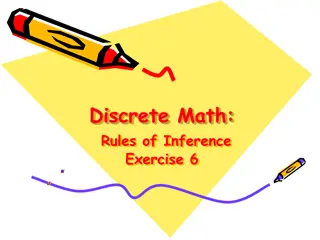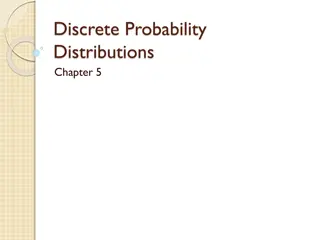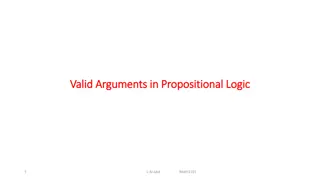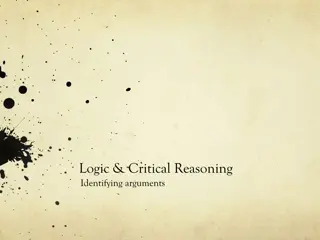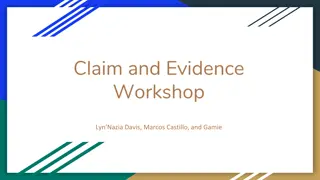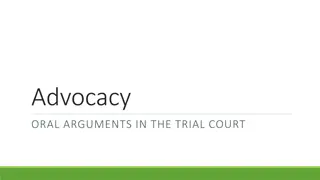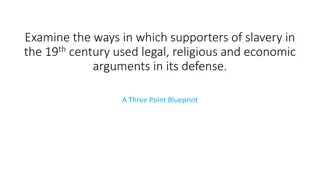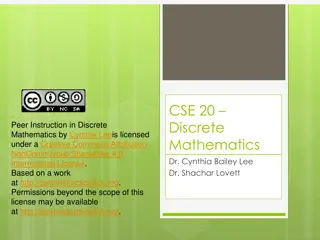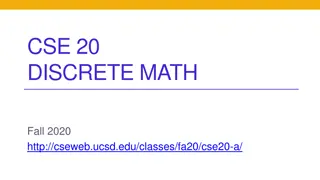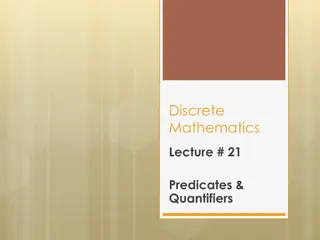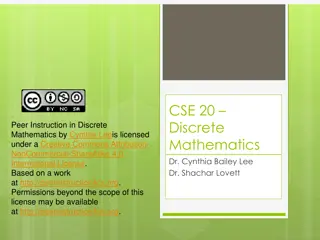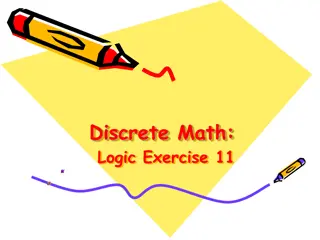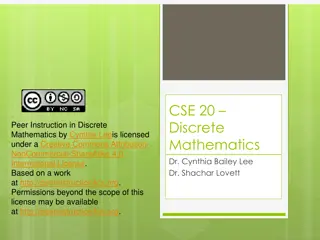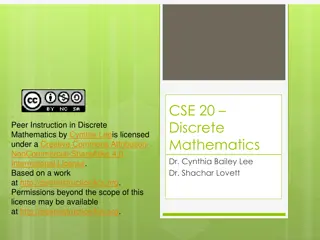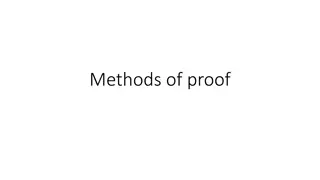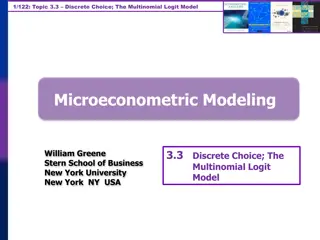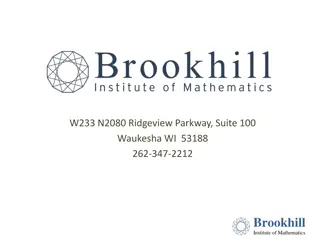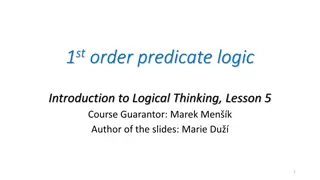Understanding Valid and Invalid Arguments in Discrete Mathematics
Concepts of valid and invalid arguments in discrete mathematics are explored through examples. Learn how to determine the validity of arguments based on premises and conclusions. Practice using truth tables to evaluate argument forms. Enhance your logical reasoning skills in Discrete Mathematics.
Uploaded on Sep 29, 2024 | 0 Views
Download Presentation

Please find below an Image/Link to download the presentation.
The content on the website is provided AS IS for your information and personal use only. It may not be sold, licensed, or shared on other websites without obtaining consent from the author. Download presentation by click this link. If you encounter any issues during the download, it is possible that the publisher has removed the file from their server.
E N D
Presentation Transcript
Discrete Mathematics Lecture # 8
Example An interesting teacher keeps me awake. I stay awake in Discrete Mathematics class. Therefore, my Discrete Mathematics teacher is interesting. Is the above argument valid?
Argument An argument is a list of statements called premises (or assumptions or hypotheses) followed by a statement called the conclusion. P1 Premise P2 Premise P3 Premise . . . . .. . . . . Pn Premise ______________ C Conclusion
Valid Argument An argument is valid if the conclusion is true when all the premises are true. Alternatively, an argument is valid if conjunction of its premises imply conclusion. (P1 P2 P3 . . . Pn) C is a tautology.
Invalid Argument An argument is invalid if the conclusion is false when all the premises are true. Alternatively, an argument is invalid if conjunction of its premises does not imply conclusion.
Example Show that the following argument form is valid: p q Show that the following argument form is valid: p q p q P q
Example Show that the following argument form is invalid: p q Show that the following argument form is valid: p q p q q p
Exercise Use truth table to determine the argument form p q p ~q p p q Show that the following argument form is valid: p q r r is valid or invalid.
Exercise If Tariq is not on team A, then Hameed is on team B. If Hameed is not on team B, then Tariq is on team A. Therefore, Tariq is not on team A or Hameed is not on team B.
Solution Let t = Tariq is on team A h = Hameed is on team B Then the argument is ~ t h ~ h t ~ t ~ h
Solution T H ~T H ~H T ~T ~H T T T T F T F T T T F T T T T F F F F T
Exercise If at least one of these two numbers is divisible by 6, then the product of these two numbers is divisible by 6. Neither of these two numbers is divisible by 6. The product of these two numbers is not divisible by 6.
Solution Let d = divisible by 6. p = product of these two numbers is divisible by 6. at least one of these two numbers is Then the argument become in these symbols d p ~ d ~ p
solution D P D P ~D ~P T T T F F T F F F T F T T T F F F T T T
Exercise If I got an Eid bonus, I ll buy a stereo. If I sell my motorcycle, I ll buy a stereo. If I get an Eid bonus or I sell my motorcycle, then I ll buy a stereo. SOLUTION: Let e = I got an Eid bonus s = I ll buy a stereo m = I sell my motorcycle The argument is e s m s e m s
Solution e T T T T F F F F s T T F F T T F F m T F T F T F T F e s T T F F T T T T m T T F T T T F T s e m T T T T T F T F e m s T T F F T T F T
Example An interesting teacher keeps me awake. I stay awake in Discrete Mathematics class. Therefore, my Discrete Mathematics teacher is interesting.
Solution t: my teacher is interesting a: I stay awake m: I am in Discrete Mathematics class The argument to be tested is t a, a m Therefore m t
Solution t T T T T F F F F a T T F F T T F F m T F T F T F T F t a T T F F T T T T a m T F F F T F F F m t T F T F F F F F The argument is not valid
